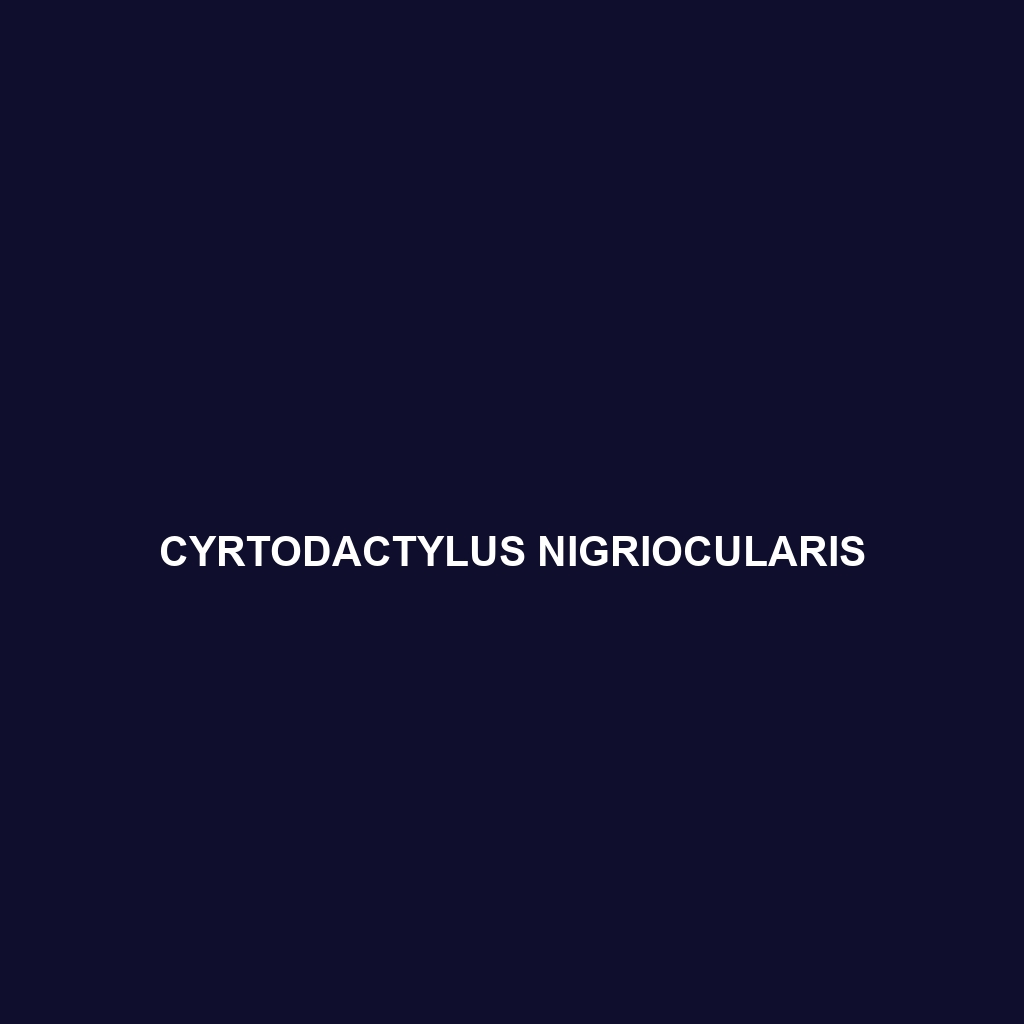Cyrtodactylus nicobaricus
Common Name: Cyrtodactylus nicobaricus
Scientific Name: Cyrtodactylus nicobaricus
Habitat
Cyrtodactylus nicobaricus is primarily found in the Nicobar Islands, situated in the Bay of Bengal. It thrives in tropical forest environments, particularly in areas rich in humidity and greenery. This species tends to inhabit both primary and secondary forests, as well as coastal regions with sandy soils.
Physical Characteristics
This gecko can reach lengths of approximately 20 to 25 cm and is characterized by its slender body and long tail. The coloration varies, typically featuring a blend of brown and gray tones, which provide excellent camouflage against the forest backdrop. Notable features include distinct tubercular scales and a flattened body shape, allowing it to navigate easily through its arboreal habitat.
Behavior
Cyrtodactylus nicobaricus exhibits nocturnal behavior, emerging at night to hunt for food and engage in various activities. They are known for their agility and ability to climb, often seen perched on tree branches or rocky surfaces. Their vocalizations and territorial displays are important aspects of their social interactions, especially during the breeding season.
Diet
This species primarily feeds on a diet of insects, including crickets, ants, and small beetles. As an opportunistic feeder, Cyrtodactylus nicobaricus may also consume spider species when available, making it an integral part of the ecosystem’s food web.
Reproduction
The breeding season for Cyrtodactylus nicobaricus typically occurs during the warm months, usually from March to June. Females lay one to two eggs per clutch, which are often hidden under leaf litter or in crevices to protect them from predators. The hatchlings emerge approximately 60 days after being laid and are independent from birth.
Conservation Status
Currently, Cyrtodactylus nicobaricus is listed as a vulnerable species due to habitat destruction and climate change impacting its natural environment. Conservation efforts are essential to protect its habitat and ensure the species’ survival.
Interesting Facts
One fascinating fact about Cyrtodactylus nicobaricus is its ability to change color slightly to blend in with its surroundings, which aids in evading predators. Additionally, they can regenerate their tails, providing a survival advantage against potential threats.
Role in Ecosystem
Cyrtodactylus nicobaricus plays a crucial role in its ecosystem as both a predator and prey. By controlling insect populations, it helps maintain ecological balance. In turn, it serves as a food source for larger predators within the Nicobar habitats, emphasizing its importance in the food chain.
